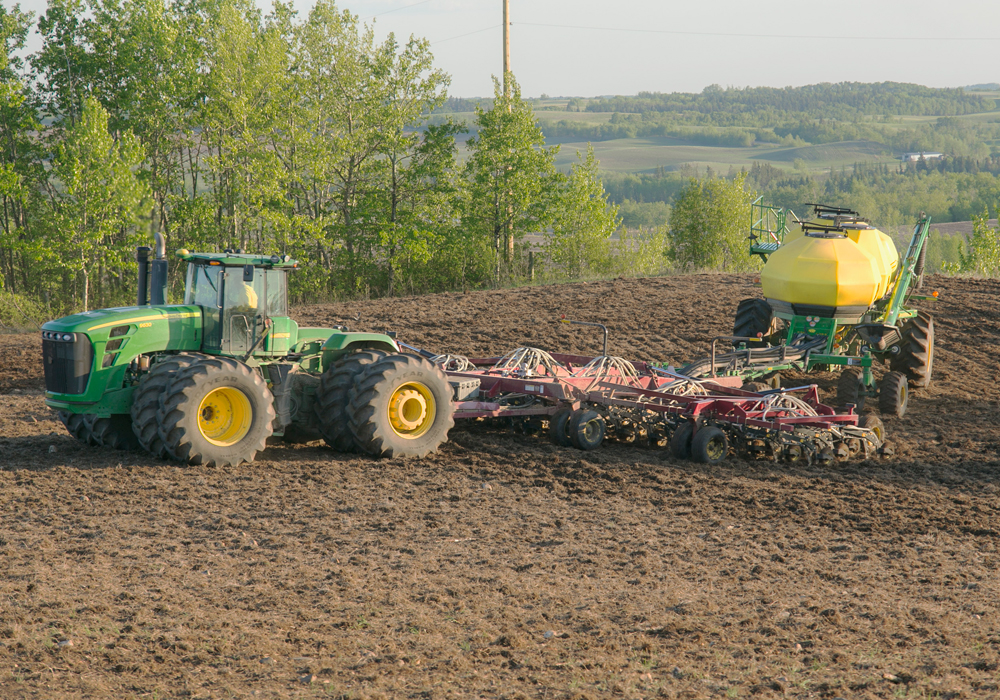Farmers, seed distributors and crop processors got a sneak preview last week of the newest pulse, cereal and oilseed lines being developed by plant breeders across Canada.
The lines were highlighted in Saskatoon Feb. 23-25 during the Prairie Grain Development Committee’s annual meeting, an event that evaluates the latest crop creations and brings together farmers, plant breeders, plant pathologists, grain quality experts, food scientists, maltsters, brewers, agricultural exporters, seed growers, seed distributors and feed and food processors.
Kelly Turkington, who chairs the PGDC, said the meeting brings together a wide range of disciplines.
Read Also

VIDEO: Agritechnica Day 4: Robots and more robots, Nexat loves Canada and the trouble with tariffs
Agritechnica Day 4: Robots and more robots, Nexat loves Canada and the trouble with tariffs.
“It is very important in terms of varietal development … and it also brings together (interests) from the public and private sectors, various scientific disciplines, industry and individual producers.”
The PGDC meetings are intended to evaluate new crop lines and determine whether they are fit for registration and commercial production in Western Canada.
Crop lines developed and tested by plant breeders over several years are put forward for registration, scrutinized by scientists and industry and either approved or rejected for registration.
Lines that are supported for registration are presented to the Canadian Food Inspection Agency’s variety registration office in Ottawa, where final registration approval is granted or denied.
This year, PGDC evaluated new high-yielding malt barley lines and specialty high-amylose food barleys that are beginning to generate interest among food processing companies around the world.
The high amylose lines, also known as waxy-starch barleys, offer relatively high levels of beta-glucan, a component linked to improved human nutrition and enhanced immunological function.
Lines that were recommended last week by the PGDC must now be registered, multiplied and distributed to growers throughout the West.
That process can take three to five years.
Although the new crop lines on display last week are still several years away from commercial production, Turkington said industry stakeholders are keenly interested in learning more about the lines and the unique characteristics they offer.
“On the barley side, for example, you’ve got the maltsters and the brewers and the quality people that deal with evaluation of candidate lines attending these meetings,” said Turkington.
“On the wheat side, you’ve got the millers and the bakers and so on, and for oats, if you’re looking at a milling oat, you’ve got Quaker, you’ve got General Mills, and you’ve got other end-users there, so it is a meeting that attracts a wide range of people.”
The lines up for consideration last week included 13 of wheat, three triticale, 20 pulses and special crops, two canola, three oat and nine barley. A formal summary of the evaluation is expected in March.
What is the PGDC?
- The Prairie Grain Development Committee is set up to act as a forum to exchange information on development of improved cultivars of grain crops for the western Canadian Prairies
- Designed to advise regulatory agencies about legislation and regulations governing grain breeding, cultivar production and sector development
- Facilitates scientific discussion of research priorities for the improvement of the prairie grain sector.
New wheat lines proposed
- A new midge-tolerant red spring wheat with improved yield potential relative to other midge tolerant varieties and increased kernel size
- A new select winter wheat that offers stronger straw, higher yield and improved kernel size relative to check varieties
- New higher yielding general purpose wheat lines developed for ethanol production
- New lines of red spring and durum wheat that offer better resistance to fusarium head blight















